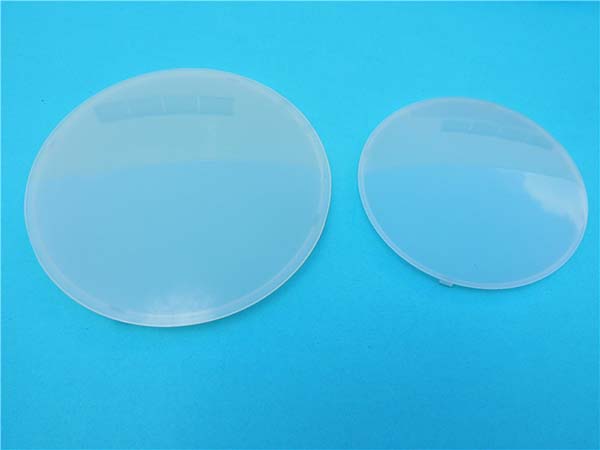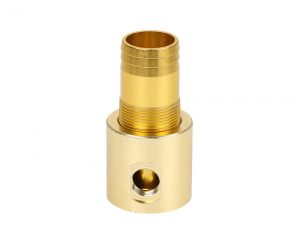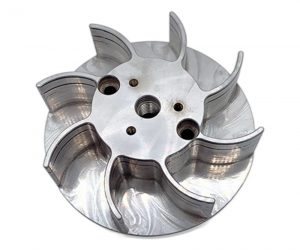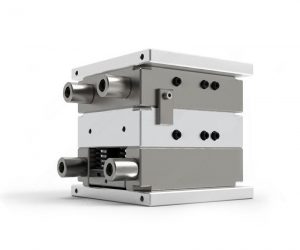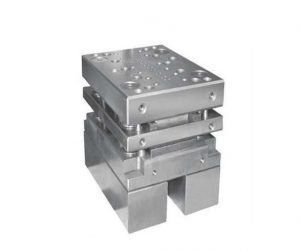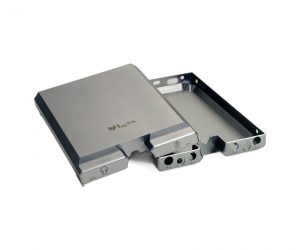1. Introduction
1.1 Definition of Rapid Manufacturing Process
Rapid manufacturing, also recognized as additive manufacturing or 3D printing in some contexts, represents a suite of advanced processes that utilize digital design data to swiftly produce parts and products. Unlike traditional subtractive manufacturing methods which involve removing material from a larger block to create the desired shape, rapid manufacturing builds objects layer by layer directly from digital models. This revolutionary approach allows manufacturers to bring their ideas from the digital realm to a physical form with remarkable speed and precision.
For Yigu Technology instance, in a traditional manufacturing process of creating a complex mechanical part, a large piece of metal would be cut, drilled, and shaped through a series of machining operations, which could be time - consuming and wasteful as a significant amount of material is discarded. In contrast, with rapid manufacturing, the same part can be fabricated by depositing layers of material, such as plastic or metal powder, precisely where they are needed according to the digital blueprint. This not only reduces material waste but also enables the production of highly intricate geometries that are often challenging or impossible to achieve with traditional techniques.
1.2 The Significance of Accelerating Production
In today's highly competitive global market, accelerating production is of utmost importance for businesses. Firstly, it provides a significant competitive edge. In industries where new products are constantly being introduced, the ability to bring a product to market faster than competitors can mean capturing a larger market share. For example, in the consumer electronics industry, companies that can quickly produce and launch the latest smartphones or wearable devices are more likely to attract early - adopters and gain a head - start in sales.
Secondly, accelerating production can lead to substantial cost savings. By reducing the time it takes to produce a product, companies can decrease labor costs associated with long production cycles. Additionally, it can minimize inventory holding costs. With rapid manufacturing enabling on - demand production, businesses no longer need to store large quantities of finished goods or components in anticipation of future orders. A study by McKinsey found that companies that adopted rapid manufacturing for small - scale production saw a 30 - 40% reduction in inventory costs.
Finally, faster production helps in better meeting customer demands. In an era where customers expect quick turnarounds and personalized products, rapid manufacturing allows companies to respond promptly. Custom - made products can be designed and produced in a relatively short time, enhancing customer satisfaction. For example, in the medical field, custom - fit prosthetics can be manufactured in a matter of days using rapid manufacturing techniques, improving the quality of life for patients much more rapidly compared to traditional manufacturing methods that could take weeks or months.
2. Technologies in Rapid Manufacturing
2.1 3D Printing Technologies
3D printing, a cornerstone of rapid manufacturing, encompasses several distinct technologies, each with its own set of characteristics that contribute to accelerating production in unique ways.
Stereolithography (SLA)
SLA uses a laser to cure liquid resin, solidifying it layer by layer. One of its most remarkable features is its high precision, which can reach accuracies down to 0.1mm. This makes SLA particularly suitable for applications where high - precision components are required, such as in the production of dental implants or intricate jewelry pieces. In the dental industry, custom - made dental crowns and bridges can be produced with SLA. The high precision ensures a perfect fit for the patient's teeth, reducing the need for additional adjustments during the fitting process. As a result, the production cycle for these dental products is significantly shortened, from weeks with traditional methods to just a few days with SLA 3D printing.
Selective Laser Sintering (SLS)
SLS employs a laser to sinter powdered material, binding it together to form a solid structure. It is well - known for its ability to handle complex geometries without the need for additional support structures, as the unsintered powder supports the part during the printing process. This advantage is crucial in industries like aerospace, where lightweight and complex - shaped components are in high demand. For instance, when manufacturing a rocket engine component with internal channels and lattice structures for weight reduction, SLS can produce the part in one piece, eliminating the need for multiple parts to be assembled later. This not only speeds up the production process but also improves the structural integrity of the component.
The following Yigu Technology table summarizes the key features of these 3D printing technologies in terms of production - accelerating aspects:
| 3D Printing Technology | Accuracy | Speed | Cost - effectiveness for Prototyping | Suitability for Complex Geometries |
| FDM | 0.2 - 0.4mm | Relatively fast for simple parts, can be adjusted by changing layer thickness | High | Good for moderately complex shapes |
| SLA | Down to 0.1mm | Slower due to point - by - point curing | Moderate | Excellent |
| SLS | 0.2 - 0.5mm | Moderate, can be efficient for large - scale or complex parts | Moderate | Outstanding |
| DLP | High (comparable to SLA in precision) | Faster, cures entire layers at once | Moderate | Good |
2.2 CNC Machining and Laser Cutting
CNC Machining
CNC (Computer Numerical Control) machining uses computer - controlled machines to precisely cut materials such as metals, plastics, and composites. It offers high versatility, being suitable for both prototyping and production runs. In rapid manufacturing, CNC machining plays a vital role in producing high - precision parts with tight tolerances. For Yigu Technology example, in the automotive industry, when manufacturing engine components like cylinder heads or crankshafts, CNC machining can accurately shape the parts from raw materials. The computer - controlled nature of the process ensures consistent quality across multiple parts. By programming the CNC machine, manufacturers can quickly switch between different part designs, reducing the setup time between production batches. This ability to rapidly adapt to different production requirements accelerates the overall production process, whether it's for producing a small batch of prototype parts or a large - scale production run.
Laser Cutting
Laser cutting employs a focused laser beam to cut through materials with high precision. It is suitable for a wide range of materials, including metals, plastics, and wood. In the rapid manufacturing of sheet - metal components, laser cutting can create intricate cuts and detailed work with great speed. A metal fabrication company producing custom - designed enclosures for electronic devices can use laser cutting to quickly cut the sheet - metal into the required shapes. The high precision of laser cutting ensures that the parts fit together perfectly during the assembly process, reducing the need for additional finishing operations. Additionally, laser cutting can be integrated into an automated production line, further enhancing the production speed. For example, in a continuous production process, the laser cutting machine can quickly cut the incoming sheet - metal, and the cut parts can be immediately transferred to the next stage of production, such as bending or welding, without significant delays.
2.3 Injection Molding and Its Advancements
Injection molding, although a traditional manufacturing technique, has seen significant advancements in mold design and fabrication that have enabled it to contribute to rapid manufacturing, especially for large - scale production of plastic parts.
New mold - making technologies, such as rapid tooling using 3D printing or advanced machining techniques, have reduced the time it takes to create molds. For Yigu Technology example, a company that needs to produce a large number of plastic housings for a new consumer product can now use 3D - printed molds as a quick alternative to traditional machined molds. These 3D - printed molds can be produced in a matter of days, compared to weeks or months for traditional molds. Once the mold is ready, the injection - molding process can start immediately.
Moreover, improvements in injection - molding machines, such as faster injection speeds and more precise control systems, have increased the production rate. A modern injection - molding machine can produce a high number of parts per hour, with each part having consistent quality. In the production of plastic toys, for instance, high - speed injection - molding machines can quickly fill the mold cavities with molten plastic, and the advanced control systems ensure that the right amount of plastic is injected each time, reducing the number of defective parts. This combination of faster mold - making and more efficient injection - molding processes has made injection molding a viable option for rapid manufacturing of large - scale plastic parts, enabling companies to quickly respond to market demands and bring products to market faster.
4. Applications across Industries
4.1 Aerospace and Defense
In the aerospace and defense industries, rapid manufacturing has emerged as a game - changer, enabling the production of lightweight, high - performance components with remarkable speed and precision. For example, in the manufacturing of aircraft parts, traditional methods often involve complex machining processes and long lead times. However, with rapid manufacturing, components such as engine brackets and wing ribs can be produced in a fraction of the time. A leading aerospace company, Boeing, has been using 3D printing to manufacture components for its 787 Dreamliner. By using 3D - printed wing rib components, the company has not only reduced the weight of the aircraft but also accelerated the production process. These 3D - printed parts are produced layer by layer, allowing for the creation of complex internal structures that optimize strength - to - weight ratios. As a result, the fuel efficiency of the aircraft has improved, and the overall production time for these components has decreased by up to 50%.
In the defense sector, rapid manufacturing plays a crucial role in the development of military equipment. For instance, the production of unmanned aerial vehicles (UAVs) has been significantly enhanced. UAV components, such as frames and propellers, can be quickly manufactured using rapid manufacturing technologies. In a military operation, if there is a need for a new UAV design to adapt to changing mission requirements, the design can be quickly modified in the digital realm and then rapidly produced. A case in point is the development of small, agile UAVs for reconnaissance missions. These UAVs require lightweight and durable components. Using selective laser sintering (SLS) 3D printing, the components can be produced within a few days, compared to weeks with traditional manufacturing methods. This allows the military to respond more quickly to dynamic battlefield situations.
4.2 Automotive and Transportation
The automotive industry has been quick to embrace rapid manufacturing, and it has had a profound impact on the development and production of vehicles. One of the primary applications is in the prototyping stage. For example, when a car manufacturer like Tesla is developing a new model, rapid manufacturing allows for the quick production of prototype parts. In the development of the Model Y, Tesla used 3D printing to produce various components such as the rear - end chassis parts. By 3D - printing these parts, they were able to test different design iterations rapidly. The traditional method of creating prototypes involved expensive and time - consuming mold - making processes, which could take weeks or even months. With 3D printing, a prototype part can be produced in a matter of days, reducing the overall development time for the new model.
Rapid manufacturing also enables the production of custom - made parts for the automotive industry. Luxury car manufacturers often offer personalized interior and exterior components to their customers. Using CNC machining and 3D printing, these manufacturers can create unique parts such as custom - designed dashboards, door handles, and wheel covers. For example, Bentley Motors uses rapid manufacturing to produce custom - made interior trim pieces for its high - end cars. These parts are designed according to the specific preferences of the customers, and the rapid manufacturing process allows for quick production and delivery. This not only enhances the customer experience but also gives the company a competitive edge in the luxury car market.
In the transportation industry, rapid manufacturing is being used to produce components for trains and buses. For example, the production of interior panels and seating components for buses can be accelerated using 3D printing. A bus manufacturing company can quickly produce these components in different designs and materials to meet the specific requirements of different transit authorities. This flexibility in production helps in reducing inventory costs, as parts can be produced on - demand rather than being stockpiled.
4.3 Consumer Products and Electronics
In the consumer products and electronics industries, rapid manufacturing has opened up new avenues for innovation and speed - to - market. One of the most visible examples is in the production of customized smartphone cases. Companies like Casetify offer a wide range of customized smartphone cases, allowing customers to upload their own designs or choose from a library of templates. Using 3D printing, these cases can be produced quickly and at a relatively low cost. Once an order is placed, the digital design is sent to the 3D printer, and the case can be printed and shipped within a day or two. This rapid production cycle allows the company to respond quickly to changing consumer trends and demands.
In the electronics industry, rapid manufacturing is used to produce small, intricate components. For Yigu Technology example, the production of circuit board components and connectors can be achieved more efficiently with rapid manufacturing. A small - scale electronics startup developing a new wearable device can use 3D printing to produce the initial prototypes of the device's enclosure and internal components. This enables them to quickly test the form factor and functionality of the device. If any design changes are required, they can be made easily in the digital model and then printed again. This iterative process can be completed in a much shorter time compared to traditional manufacturing methods, allowing the startup to bring its product to market faster and gain a competitive advantage.
Another example is the production of limited - edition consumer products. A toy company might want to release a limited - edition collectible toy. Using rapid manufacturing, they can quickly produce a small batch of these toys without the need for large - scale production facilities or expensive molds. This not only reduces the production cost but also allows them to test the market demand for the product. If the limited - edition toy proves to be popular, they can then scale up production using more traditional methods or continue to use rapid manufacturing for small, exclusive runs.
7. Conclusion
In Yigu Technology conclusion, the rapid manufacturing process has emerged as a transformative force in the manufacturing landscape, revolutionizing the way products are designed, prototyped, and produced. Its ability to accelerate production is not only a boon for individual businesses but also has far - reaching implications for entire industries and the global economy.
From the diverse range of technologies such as 3D printing, CNC machining, and laser cutting, each with its unique capabilities, to the wide - spread applications across aerospace, automotive, consumer products, and healthcare industries, rapid manufacturing has proven its versatility and efficiency. It has enabled companies to reduce lead times significantly, with some cases seeing a reduction of up to 50% or more in the time it takes to bring a product from concept to market. This speed advantage allows businesses to respond promptly to market demands, gain a competitive edge, and drive innovation.
Moreover, the cost - effectiveness of rapid manufacturing, especially for small - scale production and prototyping, has made it an attractive option for startups, SMEs, and large corporations alike. By minimizing material waste and eliminating the need for expensive tooling in many cases, it offers a more sustainable and economically viable production alternative. The customization capabilities of rapid manufacturing have also opened up new markets and business models, allowing for the production of personalized products that cater to the specific needs and preferences of consumers.
FAQs
Q1: What are the most common materials used in rapid manufacturing for consumer products?
A: For consumer products, common materials in rapid manufacturing include thermoplastics like ABS and PLA. ABS is known for its strength and durability, making it suitable for items like smartphone cases and small household appliances. PLA is a more eco - friendly option, often used for items such as 3D - printed decorative objects and some food - contact products due to its biocompatibility.
Q2: Can rapid manufacturing replace traditional mass - production methods completely?
A: While rapid manufacturing has made significant inroads into production, it is unlikely to replace traditional mass - production methods completely. For high - volume production of simple, standardized products, traditional methods like injection molding are often more cost - effective. However, for small - scale production, custom - made products, and complex geometries, rapid manufacturing offers distinct advantages. In the future, a combination of both methods is likely, with rapid manufacturing being used for prototyping, customization, and small - batch production, and traditional methods for large - scale, high - volume production.
Q3: How does rapid manufacturing impact the supply chain?
A: Rapid manufacturing can have a profound impact on the supply chain. It enables on - demand production, reducing the need for large inventories of finished goods and components. This can lead to shorter lead times and lower inventory - holding costs. Additionally, it can decentralize production, as local rapid manufacturing facilities can produce parts and products closer to the end - users, reducing the reliance on long - distance transportation and potentially making the supply chain more resilient to disruptions.
